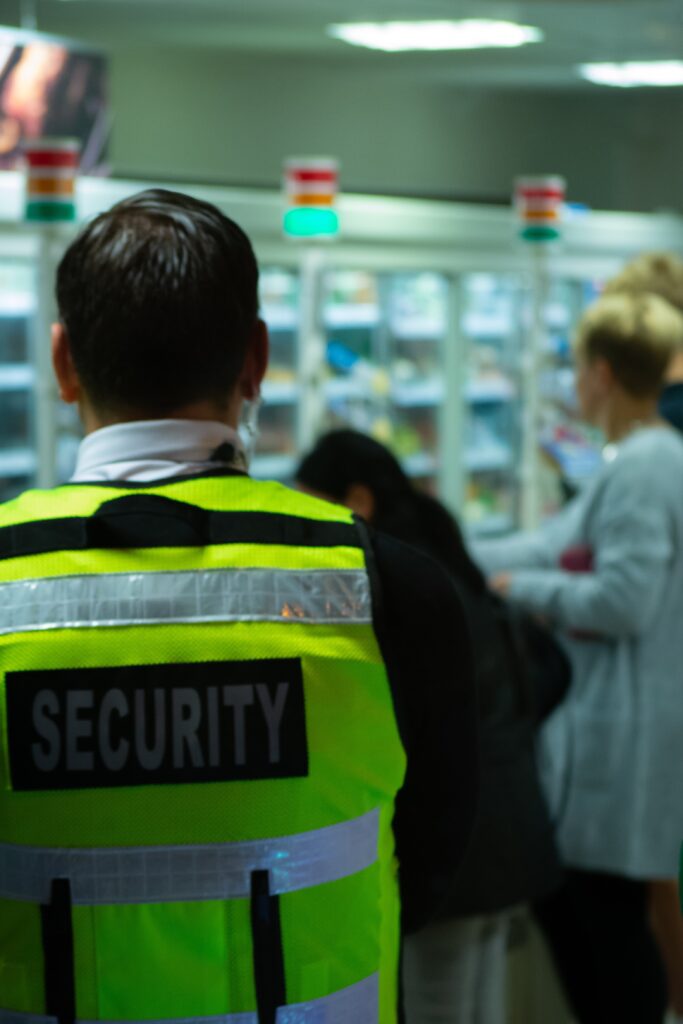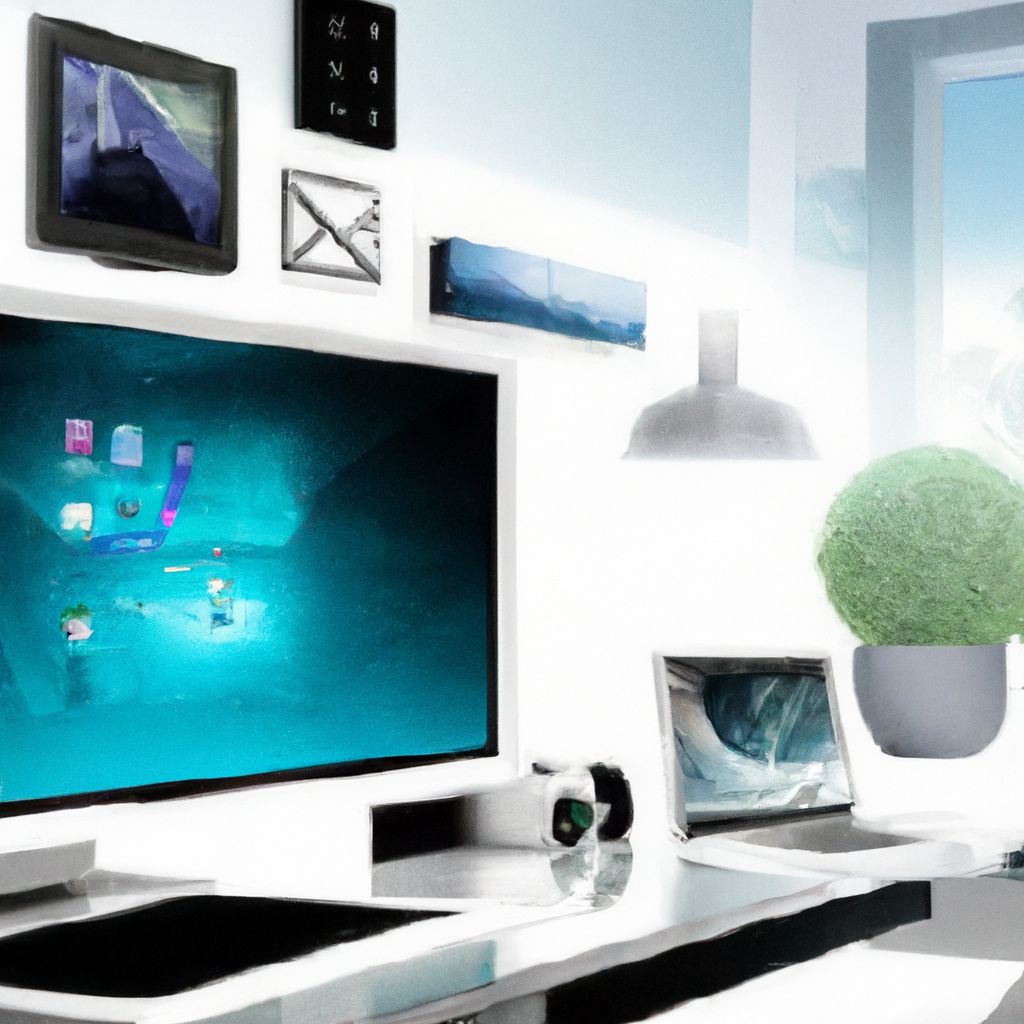Imagine living in a world where your living room is not just a space to relax, but a hub of smart devices that enhance your comfort, convenience, and entertainment. From voice-controlled lighting to automated blinds, your smart living room can make life easier and more enjoyable. However, with this interconnectedness comes the need to prioritize security to safeguard your personal information and protect your privacy. In this article, we will explore some essential security measures that you should take to ensure peace of mind in your smart living room.

Choosing Secure Devices
When setting up a smart living room, it is crucial to prioritize the security of the devices you choose. Start by researching the security features of smart devices you are interested in. Look for devices that have implemented strong security measures to protect your data and privacy. This could include features such as encrypted communication, secure access controls, and authentication protocols.
Additionally, it is essential to opt for devices from reputable manufacturers. Established brands often prioritize user security and regularly release firmware updates to address any vulnerabilities that may arise. By choosing devices from trustworthy manufacturers, you can have peace of mind knowing that they have a vested interest in keeping your smart living room secure.
Securing Your Wi-Fi Network
One of the first steps in securing your smart living room is to ensure that your Wi-Fi network is protected. Changing the default network name and password is crucial, as cybercriminals often target networks with default credentials. By personalizing these settings, you make it harder for unauthorized individuals to gain access to your network.
Additionally, it is important to use a strong Wi-Fi password that combines letters, numbers, and special characters. A strong password makes it significantly more challenging for hackers to crack it. Enabling network encryption, such as WPA2 or WPA3, is also essential. This encryption ensures that any communication between your devices and the Wi-Fi network is encrypted, further enhancing the security of your smart living room.
Lastly, consider disabling remote access to your network. While remote access can be convenient, it also poses a security risk. By disabling this feature, you limit the possibility of unauthorized individuals remotely accessing your network and compromising its security.

Create a Guest Network
To further enhance the security of your smart living room, consider creating a separate guest network. This network allows you to keep guest devices isolated from your smart home devices, reducing the risk of unauthorized access. By separating the networks, you create an additional layer of security that prevents guests from accessing sensitive information or controlling your smart devices.
When setting up the guest network, remember to set up a strong password. This password should be unique and different from the password used for your primary network. By using a strong password for the guest network, you ensure that only authorized guests can connect to it, minimizing the risk of unauthorized access to your smart living room.
Implement Strong Password Policies
Maintaining strong password policies is essential in ensuring the security of your smart living room. It is crucial to use unique and complex passwords for each device to prevent attackers from gaining access to multiple devices if one password is compromised. Avoid using easily guessable passwords such as birthdays or commonly used combinations.
Consider using a password manager to help you generate and securely store your passwords. A password manager eliminates the need to remember multiple complex passwords while ensuring that each device has a unique and strong password. This greatly reduces the risk of unauthorized access to your smart living room.
Furthermore, enable two-factor authentication whenever possible. Two-factor authentication adds an extra layer of security by requiring you to provide a second form of verification, such as a fingerprint or a one-time code sent to your smartphone, in addition to your password. This significantly reduces the chances of unauthorized access, even if someone manages to obtain your password.

Regularly Update and Patch Devices
Another critical aspect of securing your smart living room is regularly updating and patching your devices. Enable automatic updates for your devices whenever possible. Automatic updates ensure that your devices receive the latest security patches and bug fixes promptly, closing any potential vulnerabilities that attackers could exploit.
In addition to automatic updates, make it a habit to regularly check for firmware updates. Firmware updates are released by manufacturers to address specific security issues and improve the overall performance of the device. By staying up to date with firmware updates, you ensure that your smart living room remains secure and optimized.
When it comes to applying security patches, do not delay. Hackers often target devices that have not received the latest security patches, as they are more likely to have known vulnerabilities. By promptly applying security patches when they become available, you minimize the risk of falling victim to such attacks.
Manage Device Permissions
Properly managing device permissions is essential to maintain the security of your smart living room. Take the time to review and manage the app permissions granted to each device. Ensure that each device only has access to the necessary features and services it requires to function properly. By disabling unnecessary permissions, you reduce the attack surface and limit potential avenues for unauthorized access.
Additionally, it is advised to disable any unnecessary features and services that are not being utilized. Certain features, such as remote access or voice control, may introduce security vulnerabilities if not adequately protected. By disabling these features when not in use, you mitigate any potential risks they may pose to the security of your smart living room.

Secure Your Smart Hub or Controller
The smart hub or controller serves as the central control unit for your smart living room, making it imperative to secure it properly. Start by setting up a strong password for the hub or controller. Avoid using default or easily guessable passwords, as they can compromise the security of your entire smart living room. Instead, use a combination of letters, numbers, and special characters to create a strong and unique password.
Furthermore, enable encryption for communication between the hub or controller and your smart devices. Encryption adds an extra layer of security by encrypting the data that is being transmitted, making it difficult for attackers to intercept and decipher the information.
Lastly, ensure the physical security of the hub or controller. Place it in a secure location, away from prying eyes and accessible only to authorized individuals. By physically securing the hub or controller, you reduce the risk of tampering or unauthorized access to your smart living room.
Secure Your Mobile Devices
Mobile devices play a significant role in managing and controlling your smart living room. Therefore, securing your mobile devices is essential in maintaining overall security. Start by using strong passwords or biometric authentication, such as fingerprint or facial recognition, to protect your mobile device. This adds an extra layer of security and prevents unauthorized individuals from accessing your device.
Regularly updating your mobile devices is also crucial to ensure that they have the latest security patches installed. Operating system updates often include security enhancements that address known vulnerabilities, making it essential to keep your devices up to date.
Additionally, consider installing anti-malware and security apps on your mobile devices. These apps provide an additional layer of protection against malicious software and help detect and prevent potential security threats.

Install and Configure Smart Home Security Systems
Installing a comprehensive smart home security system can greatly enhance the security of your smart living room. Choose a security system that meets your specific needs and provides comprehensive coverage for your smart home devices. Such systems often include features like motion sensors, door and window sensors, and security cameras.
Once installed, take the time to configure the security system settings properly. This may include customizing alerts, setting up geofencing, or defining specific rules and automation. By configuring the system according to your preferences, you ensure that it operates optimally and provides the highest level of security for your smart living room.
Enabling monitoring and alerts is crucial in promptly detecting and responding to any security breaches. By receiving real-time notifications when unexpected activities occur, you can take immediate action and prevent potential threats from escalating.
Protect Your Privacy
Protecting your privacy should be a top priority when setting up a smart living room. Start by disabling voice and video recording features on your devices. While the convenience of voice and video control is appealing, it often involves capturing and storing personal information. By disabling these features, you maintain greater control over your privacy.
Review the privacy policies of the devices and services you use in your smart living room. Ensure that you understand how your data is collected, stored, and shared. Opt for devices and services that prioritize user privacy and provide clear and transparent explanations of their privacy practices.
Opting for local storage of data whenever possible is another effective way to protect your privacy. Storing data locally, rather than relying on cloud-based services, limits the potential exposure of your sensitive information. However, bear in mind that local storage may have limitations in terms of accessibility and remote control.
By implementing these security measures and following best practices, you can create a secure and protected smart living room environment. Prioritizing security not only safeguards your personal information and privacy but also ensures that you can fully enjoy the convenience and benefits that a smart living room offers.
